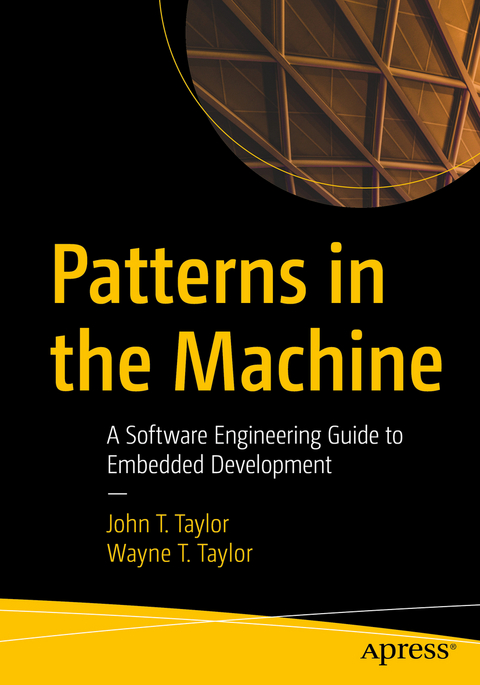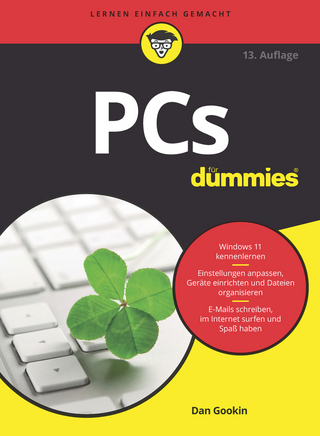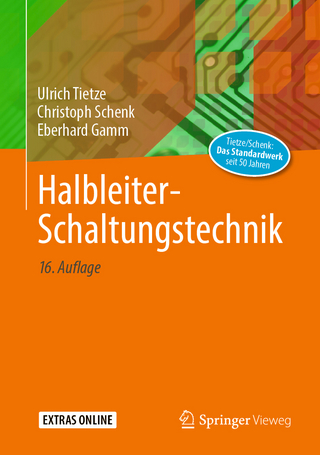
Patterns in the Machine
Apress (Verlag)
978-1-4842-6439-3 (ISBN)
This book illustrates how implementing continuous integration, automated unit testing, platform-independent code, and other best practices that are not typically implemented in the embedded systems world is not just feasible but also practical for today’s embedded projects.
After reading this book, you will have a better idea of how to structure your embedded software projects. You will recognize that while writing unit tests, creating simulators, and implementing continuous integration requires time and effort up front, you will be amply rewarded at the end of the project in terms of quality, adaptability, and maintainability of your code.
What You Will Learn
Incorporate automated unit testing into an embedded project
Design and build functional simulators for an embedded project
Write production-quality software when hardware is not available
Use the Data Model architectural pattern to create a highly decoupled design and implementation
Understand the importance of defining the software architecture before implementation starts and how to do it
Discover why documentation is essential for an embedded project
Use finite state machines in embedded projects
Who This Book Is For
Mid-level or higher embedded systems (firmware) developers, technical leads, software architects, and development managers.
John Taylor has been an embedded developer for over 29 years. He has worked as a firmware engineer, technical lead, system engineer, software architect, and software development manager for companies such as Ingersoll Rand, Carrier, Allen-Bradley, Hitachi Telecom, Emerson, and several start-up companies. He has developed firmware for products that include HVAC control systems, telecom SONET nodes, IoT devices, micro code for communication chips, and medical devices. He is the co-author of five US patents and holds a bachelor’s degree in mathematics and computer science. Wayne Taylor has been a technical writer for 25 years. He has worked with companies such as IBM, Novell, Compaq, HP, EMC, SanDisk, and Western Digital. He has documented compilers, LAN driver development, storage system deployment and maintenance, and dozens of low-level and system-management APIs. He also has ten years of experience as a software development manager. He is the co-author of two US patents and holds master’s degrees in English and human factors. He is a co-author of OS/2 and NetWare Programming (Van Nostrand Reinhold, 1995).
1: Introduction.- 2: Core Concepts.- 3: Design Theory For Embedded Programming.- 4: Persistent Storage Example.- 5: Software Architecture.- 6: Automated Unit Testing.- 7: Functional Simulator.- 8: Continuous Integration.- 9: Data Model.- 10: Finite State Machines.- 11: Documentation.- 12: File Organization and Naming.- 13: More About Late Bindings.- 14: Initialization and Main.- 15: More Best Practices.- 16: PIM Thermostat Example.- 17: The Tao of Development.- Appendix A: Terminology.- Appendix B: UML Notation for State Machines.- Appendix C: UML Cheat Sheet.- Appendix D: Why C++.- Appendix E: Package Management and Outcast.- Appendix F: Requirements vs. Design Statements.
| Erscheinungsdatum | 22.01.2021 |
|---|---|
| Zusatzinfo | 59 Illustrations, black and white; XIX, 293 p. 59 illus. |
| Verlagsort | Berkley |
| Sprache | englisch |
| Maße | 178 x 254 mm |
| Themenwelt | Mathematik / Informatik ► Informatik ► Programmiersprachen / -werkzeuge |
| Mathematik / Informatik ► Informatik ► Software Entwicklung | |
| Informatik ► Weitere Themen ► Hardware | |
| Technik ► Elektrotechnik / Energietechnik | |
| Schlagworte | Apis • Driver • Electronics • Embedded • Engineering • firmware • Hals • Hardware • Maker • programming • TIA |
| ISBN-10 | 1-4842-6439-8 / 1484264398 |
| ISBN-13 | 978-1-4842-6439-3 / 9781484264393 |
| Zustand | Neuware |
| Informationen gemäß Produktsicherheitsverordnung (GPSR) | |
| Haben Sie eine Frage zum Produkt? |
aus dem Bereich


